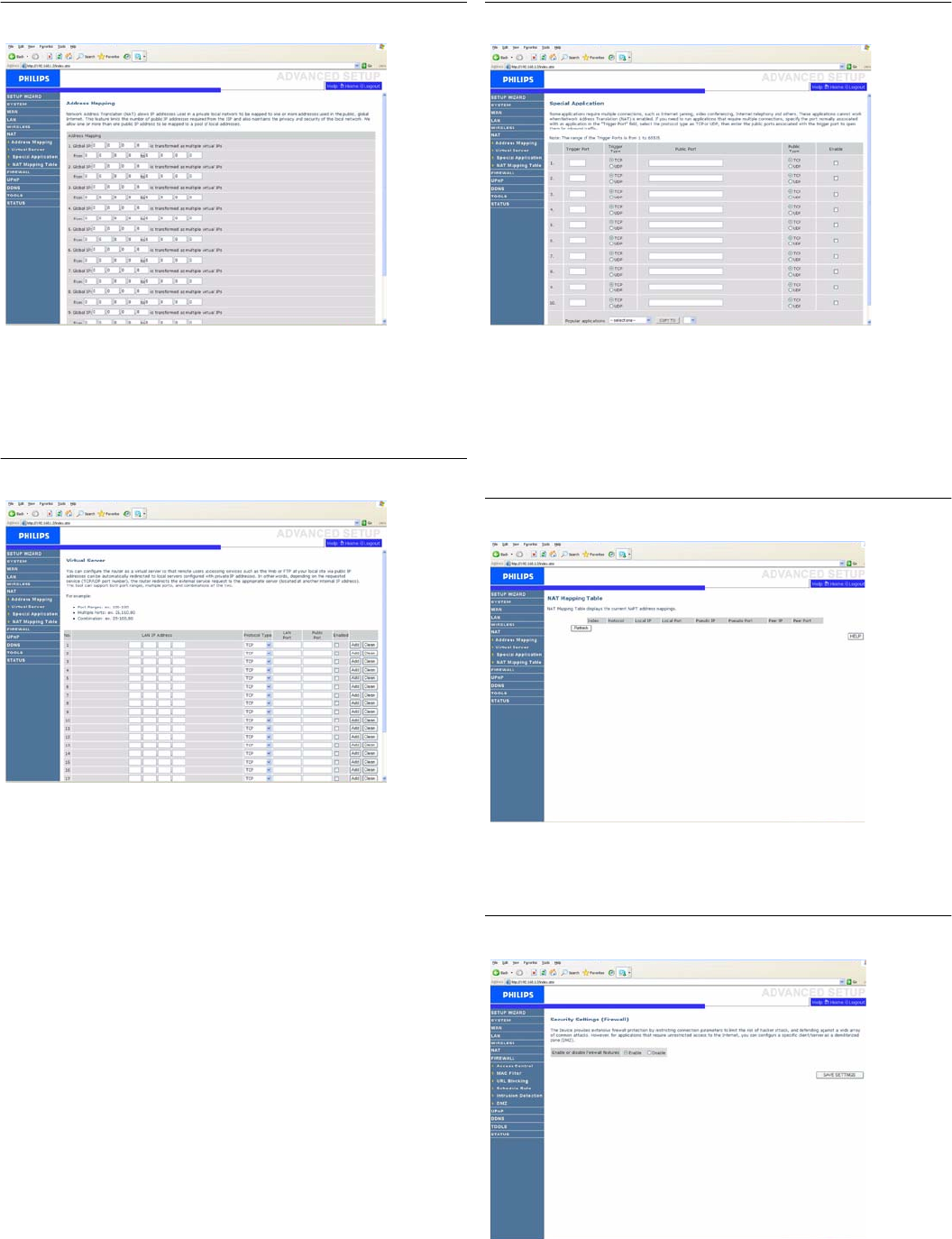
Configuring the Wireless Router
12
4.7.1 Address Mapping
Allows one or more public IP addresses to be shared by multiple
internal users. This also hides the internal network for increased privacy
and security. Enter the Public IP address you wish to share into the
Global IP field. Enter a range of internal IPs that will share the global IP
into the "from" field.
4.7.2 Virtual server
If you configure the Wireless Router as a virtual server, remote users
accessing services such as web or FTP at your local site via public IP
addresses can be automatically redirected to local servers configured
with private IP addresses. In other words, depending on the requested
service (TCP/UDP port number), the Wireless Router redirects the
external service request to the appropriate server (located at another
internal IP address).
For example, if you set Type/Public Port to TCP/80 (HTTP or web) and
the Private IP/Port to 192.168.2.2/80, then all HTTP requests from
outside users will be transferred to 192.168.2.2 on port 80. Therefore,
by just entering the IP address provided by the ISP, Internet users can
access the service they need at the local address to which you redirect
them.
A list of ports is maintained at the following link :
http://www.iana.org/assignments/ports-numbers
4.7.3 Special Applications
Some applications require multiple connections, such as Internet
gaming, video-conferencing, and Internet telephony.
These applications may not work when Network Address Translation
(NAT) is enabled. If you need to run applications that require multiple
connections, use these pages to specify the additional public ports to be
opened for each application.
4.7.4 NAT Mapping Table
This page displays the current NAPT (Network Address Port
Translation) address mappings.
4.8 FIREWALL
The Wireless Router’s firewall inspects packets at the application layer,
maintains TCP and UDP session information including time-outs and the
number of active sessions, and provides the ability to detect and prevent
certain types of network attacks.


















